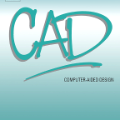Skin lesions are classified in benign or malignant. Among the malignant, melanoma is a very aggressive cancer and the major cause of deaths. So, early diagnosis of skin cancer is very desired. In the last few years, there is a growing interest in computer aided diagnostic (CAD) using most image and clinical data of the lesion. These sources of information present limitations due to their inability to provide information of the molecular structure of the lesion. NIR spectroscopy may provide an alternative source of information to automated CAD of skin lesions. The most commonly used techniques and classification algorithms used in spectroscopy are Principal Component Analysis (PCA), Partial Least Squares - Discriminant Analysis (PLS-DA), and Support Vector Machines (SVM). Nonetheless, there is a growing interest in applying the modern techniques of machine and deep learning (MDL) to spectroscopy. One of the main limitations to apply MDL to spectroscopy is the lack of public datasets. Since there is no public dataset of NIR spectral data to skin lesions, as far as we know, an effort has been made and a new dataset named NIR-SC-UFES, has been collected, annotated and analyzed generating the gold-standard for classification of NIR spectral data to skin cancer. Next, the machine learning algorithms XGBoost, CatBoost, LightGBM, 1D-convolutional neural network (1D-CNN) were investigated to classify cancer and non-cancer skin lesions. Experimental results indicate the best performance obtained by LightGBM with pre-processing using standard normal variate (SNV), feature extraction providing values of 0.839 for balanced accuracy, 0.851 for recall, 0.852 for precision, and 0.850 for F-score. The obtained results indicate the first steps in CAD of skin lesions aiming the automated triage of patients with skin lesions in vivo using NIR spectral data.
翻译:暂无翻译



